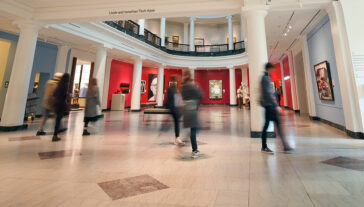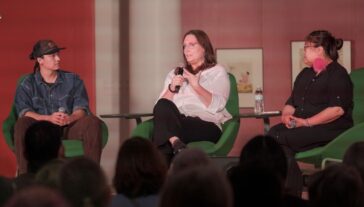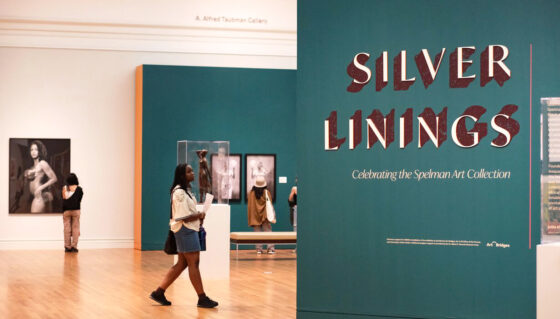A Love Letter to Blackness: Yodit Mesfin Johnson on Cultivating Culture and Community at Silver Linings
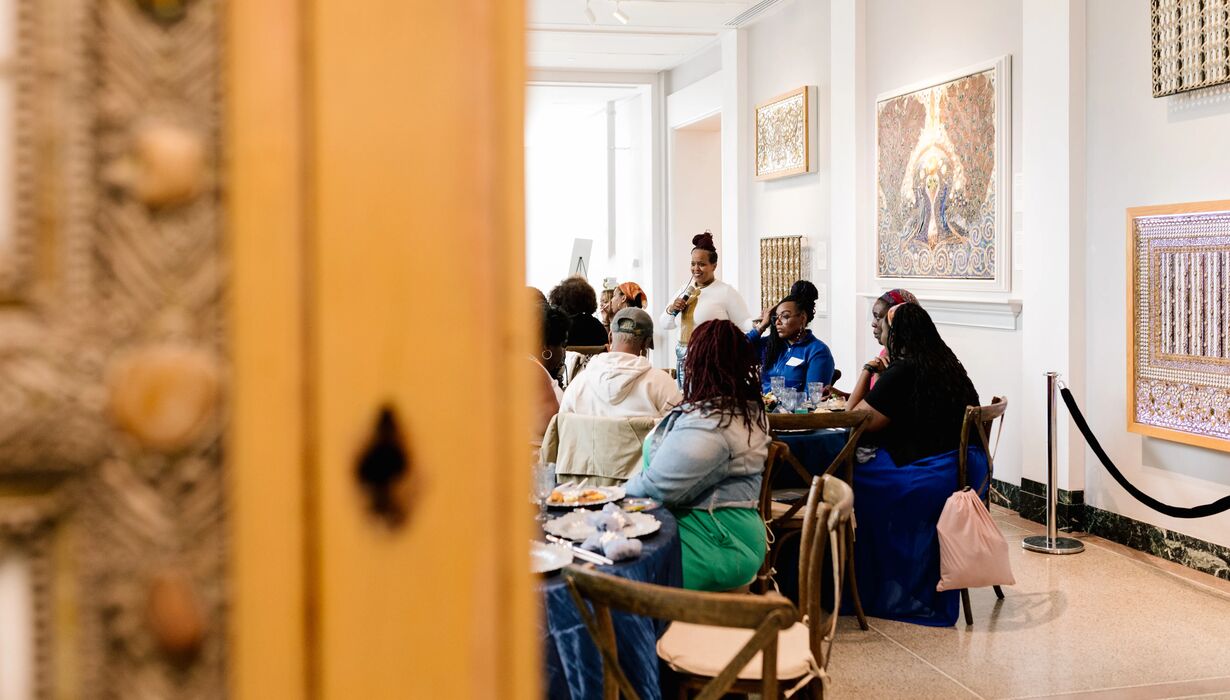
For Yodit Mesfin Johnson, community is more than a word—it’s a core value; as are love and service. A lifelong advocate for racial and economic justice, Yodit has devoted her work to creating spaces where all people—especially those who’ve been historically marginalized—are not only seen and heard, but celebrated. Most recently, in her role as the guest program curator for UMMA’s Silver Linings: Celebrating the Spelman Art Collection, Johnson looks to bring a collective vision to life in a way that transcends traditional museum programming.
UMMA: Can you share a bit about your background and what drew you to collaborate with UMMA for Silver Linings programming
JOHNSON: I’m the daughter of a political activist and immigrant from Ethiopia and a K-12 educator who brought her histories of organizing into the classroom, and into higher education where she worked in her later years. I am a daughter of Detroit too. I spent my formative years in Detroit which, at the time, was America’s largest majority-Black city. That left an impression on me. Seeing the multiplicity of Blackness that a city like Detroit offers played a huge part in my understanding of myself, and of my people. I grew up in a home that was filled with love and a sense of responsibility for community. We moved to Washtenaw County when I was entering highschool. For a long time I felt invisible here. It was a culture shock and I longed to be seen, heard and valued.
My work at NEW, an organization that works alongside other nonprofits, inspiring and equipping them to realize their visions of a just and thriving society, is what brought me to a relationship with UMMA. In 2019, I led and facilitated a series of engagement sessions with Black community members to help inform UMMA’s Strategic Plan. That work was a catalyst for ongoing dialogue and relationships with the Museum staff.
Then, I invited a former curator at UMMA, Ozi Uduma, to be a guest on Centering Justice, a monthly podcast I host. Ozi introduced me to a really phenomenal exhibition, Unsettling Histories, they curated. The exhibition interrogates views on museums and what’s underneath them, and heroes of American folklore. That is what drew me in; seeing the museum take the steps they’d promised during the focus groups, unlike others who made similar commitments but never followed through. That demonstrated effort was enough for me to feel confident that I could engage meaningfully when staff approached me about curating programs for Silver Linings.
Working with UMMA has allowed me the opportunity to delve into something creative, and celebratory. That’s not always the case in the work we do at NEW, or in the movement for justice. It’s been healing and cathartic to amplify this great collection and to bring the community into UMMA.
UMMA: How did you approach developing events for Silver Linings?
JOHNSON: I was inspired by an author, Cole Arthur Riley, who wrote “Black Liturgies”. It is a project that integrates spiritual practice with Black emotion, Black literature, and the Black body through a collection of prayers, poems, and meditations that focuses on the inner worlds of Black folks. Cole’s work inspired the overall theme for the events “A Love Letter To Blackness,” which Silver Linings and Spelman College have been for so many people.
I reflected on the prayers of ancestors that had to be stirred up in order for Spelman College to be built. The prayers and effort that went into protecting and preserving the artwork of the featured artists. That’s love, to me. And I wanted the folks who would attend these events that I’ve curated to feel that—to feel loved, revered, highly regarded and cared for—which is rare in institutions in America, for Black folk and Black women in particular. So this idea of a ‘love letter to Blackness’ was really on my mind as we were developing these events.
There is a civil rights leader, John Powell who does a lot of work around othering and belonging. He says that at the center of any significant social movement there are two fundamental questions: “Do you see me?” and “Do I matter?” For me, those questions underscore each of these events. It’s a resounding “Yes”, I do see you, and “Yes”, you do matter.
UMMA: What role do partnerships with organizations & individuals play in the Silver Linings programming?
JOHNSON: I’m an organizer at heart, and an organizing principle is, ‘Nothing about us without us.’
With that in mind, we formed an advisory group where I pitched my ideas for programs, and they helped make them our ideas, collectively.
The group consisted of julia elizabeth neal, guest curator of Silver Linings; folks from the University of Michigan; Elizabeth James, Program Associate with the Department of Afroamerican and African Studies; Melynda Price, Director and Professor of the Institute for Research on Women and Gender; as well as folks from the broader community, Lynne Settles, Art Director of Embracing Our Differences Michigan; Jenny Jones, Co-Executive Director of Title Track; Dr. Mishelle Rodriguez Founder of Collaborative Changemakers; and Tunde Olaniran, Flint based artist and founder of Magic Wheel Creative.
The advisory group added richness and perspectives that were insightful and helpful. We also have a subset of other collaborators such as amazing graphic designers, performers, caterers, speakers and many more community members involved in making each event happen. Those partnerships are really elevating the quality and caliber of each event.
UMMA: Looking ahead, what are your aspirations for the impact of the Silver Linings programming on UMMA and for art museums more broadly?
JOHNSON: I think in general, what this opportunity has validated for me is how essential community-driven planning is. Whatever our work entails—a museum exhibition or nonprofit programming or strategy, or how to plan neighborhoods and cities—if we trust, listen to, and follow the visions of those who are impacted by our plans, we can not only create better programs or outcomes, but we can upend the histories and legacies of exclusion, colonialism and white supremacy. If museums were constructed solely for the benefit of the wealthy and their stories, then my hope is that these events, and the incredible response, affirms for other institutions that this isn’t merely a moral obligation, it’s a better business decision too.
My aspirations are that by demonstrating the impact that this approach can have, leaders will be motivated to replicate it, and continue to partner with folks like me, and spread the word throughout the museum sector and community that this kind of collaboration can benefit them, and the communities they’re in. We can use those museum walls, if you will, to paint a picture that better reflects the beautiful mosaic of our human family, while repairing the original sins of our nation.
Nothing I’m doing is particularly revolutionary, but it is an evolution of the work of my ancestors and others who struggle for human and civil rights. I hope these events and experiences serve as an inspiring reminder that we are not the ones who have to keep taking steps towards a future where we are all free.
There is a civil rights leader, John Powell who does a lot of work around othering and belonging. He says that at the center of any significant social movement there are two fundamental questions; Do you see me? And do I matter? And for me, that underscores each of these events. It's a resounding “Yes”, I do see you, and “Yes”, you do matter.
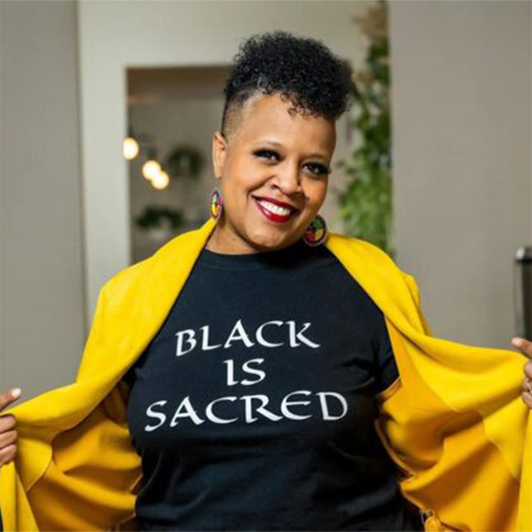
Photos from the first event in this series
All photos taken by by Britt Hueter at Silver Linings: Yemaya Brunch.

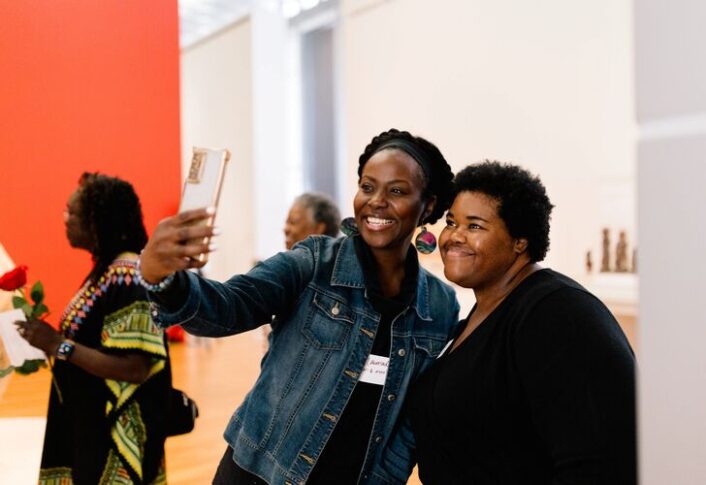
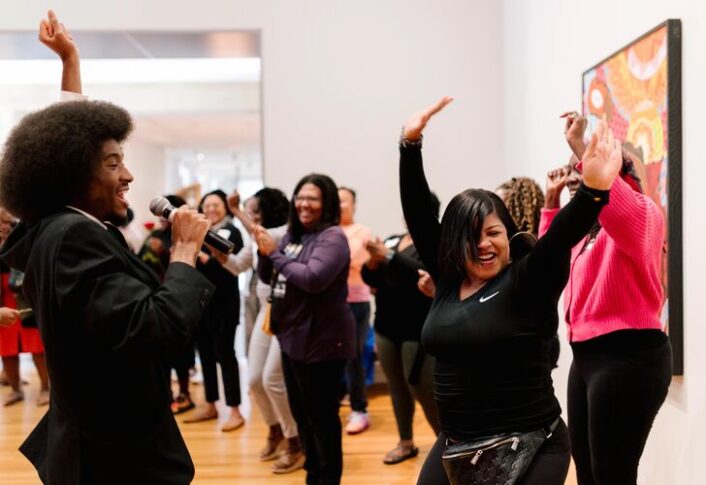
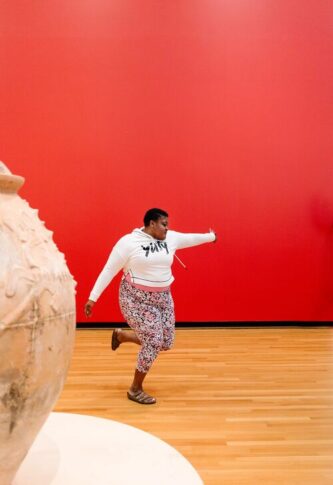
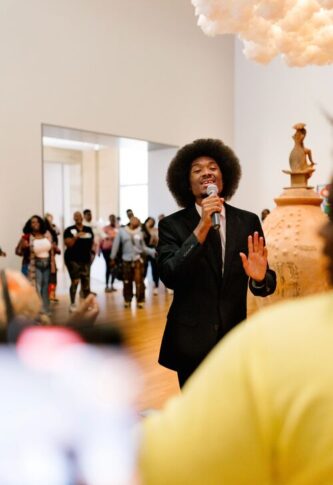
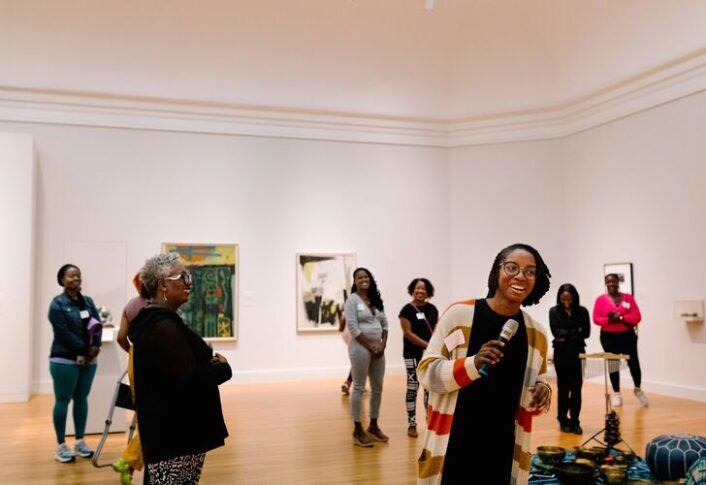
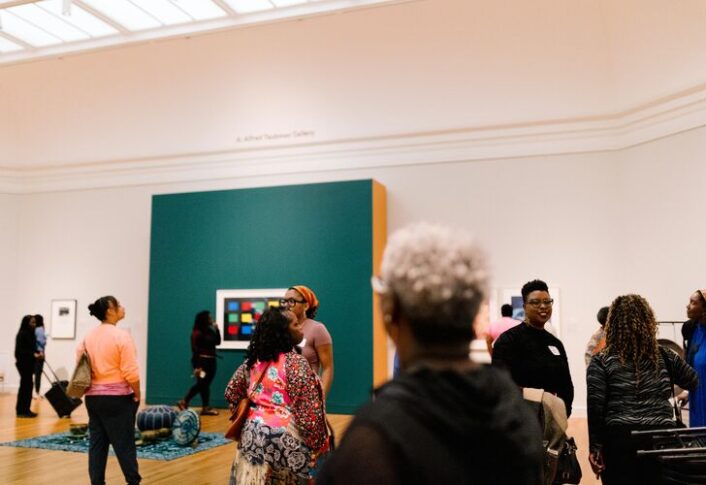
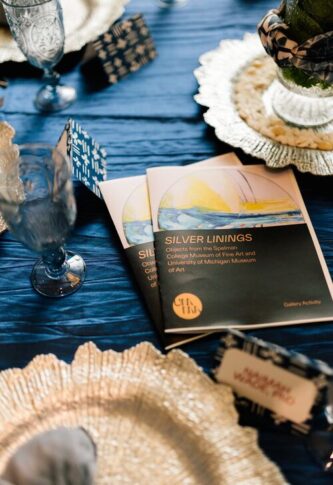
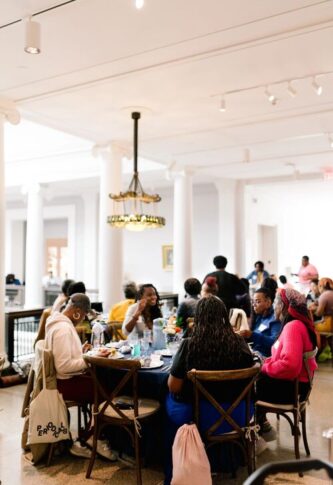
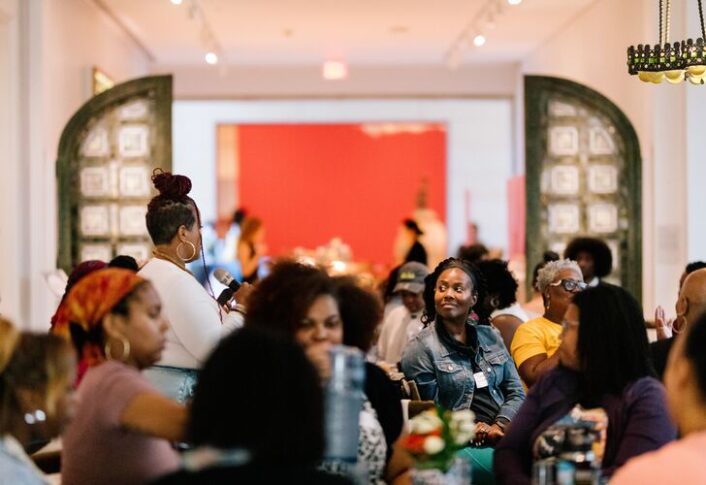
More from UMMA

